Deep in a grove of ancient massive cottonwood trees the sun has gone down turning what was earlier a bright sun filled space into one now filled with shadows and looming arboreal giants standing quietly, their enormous branches arching overhead like giant arms covered with the newly minted leaves of spring.
There was a slight breeze earlier but now all is still. Silence has settled over the grove and the slightest sound, from the rustling of a vole in the leaf strewn floor, to the footsteps of those who have come here to observe one of natures small miracles are magnified. The miracle everyone wants to see is a small puff of feathers slightly larger than a softball called an Eastern Screech owl and she and her mate have chosen a small opening in one of the cottonwoods to nest and raise her four owlets.
The owlets are now large enough that they seem to fill the cavity within the tree to its maximum allowance of owls. They spend most of their time peering out of the opening in the massive tree limb, small little heads still covered with the light downy feathers of the very young, bobbing up and down, side to side, rotating in a circle, trying to make sense of what they see outside of the confines of the only home they’ve known.
Suddenly there is a call, a small sound that has been likened to a soft tremolo and a whinny, not the grating fingernails on the blackboard sound that comes to mind hearing it described as a screech. It is a beautiful, delicate sound that hangs in the air for a heartbeat after being uttered. Then another and another, the female perched on a nearby branch calling and coaxing, trying to get the remaining owlets to leave the nest.
Of the four owlets, two are much larger than their siblings due to something called asynchronous hatching which roughly means the eggs are laid a day or so apart maybe longer, causing the first born to have more food, grow bigger and leave the nest sooner, which is what the first two owlets have done. They haven’t gone far however as the they still need to be fed by the parents until they can fly. They are perched huddled together on a nearby branch still very much a part of the family.
The adults are now spending most of their time outside the nest on nearby branches, calling to the remaining youngsters inside, bringing them the occasional mouse or vole whichever is unlucky enough to be spotted by these silent hunters, coaxing them to leave the nest and venture forth out into the wide new world they’ve come into.
Soon full darkness has overcome the grove and those that have come here to see and enjoy this connection with nature have left, leaving these beautiful creatures to their solitude, their gentle calls still gracing the night.

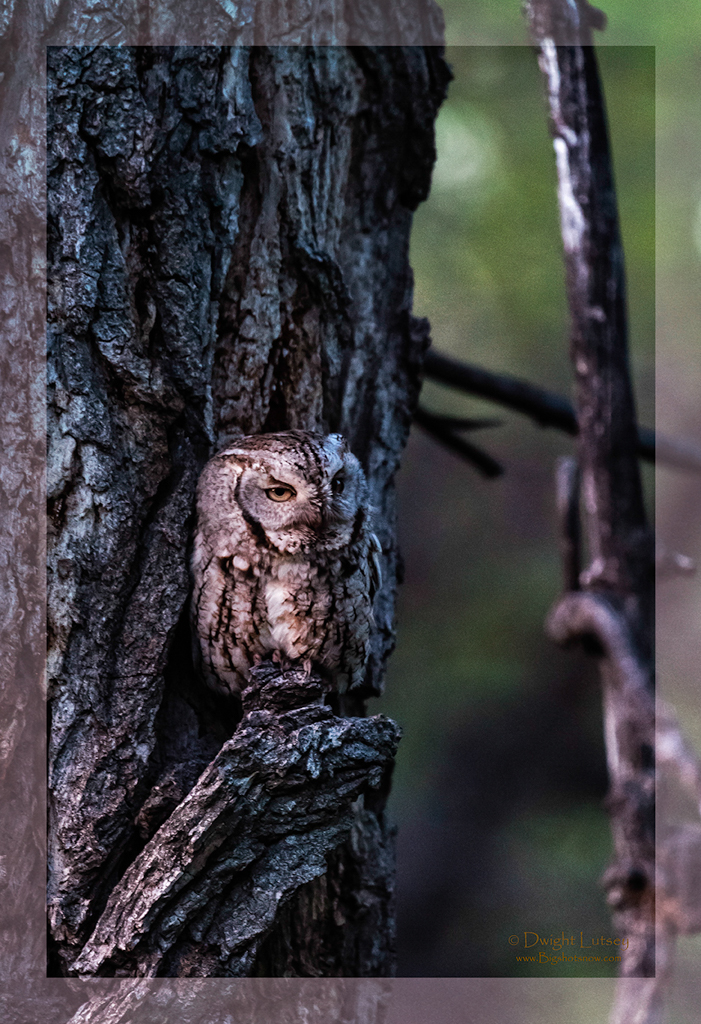
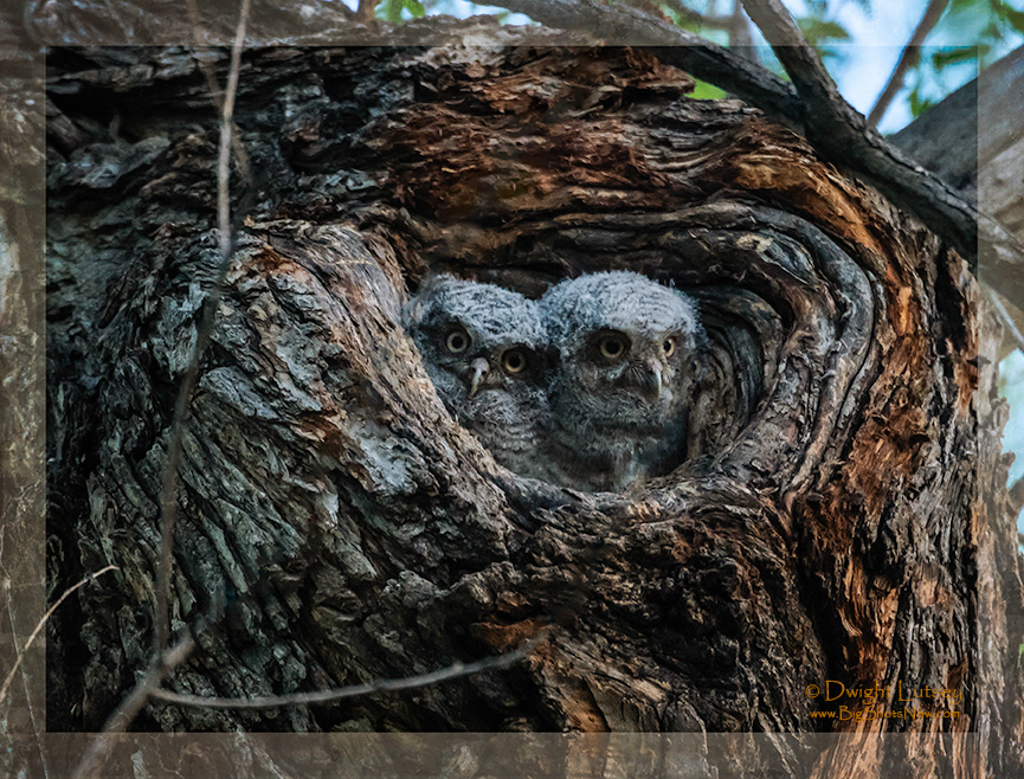
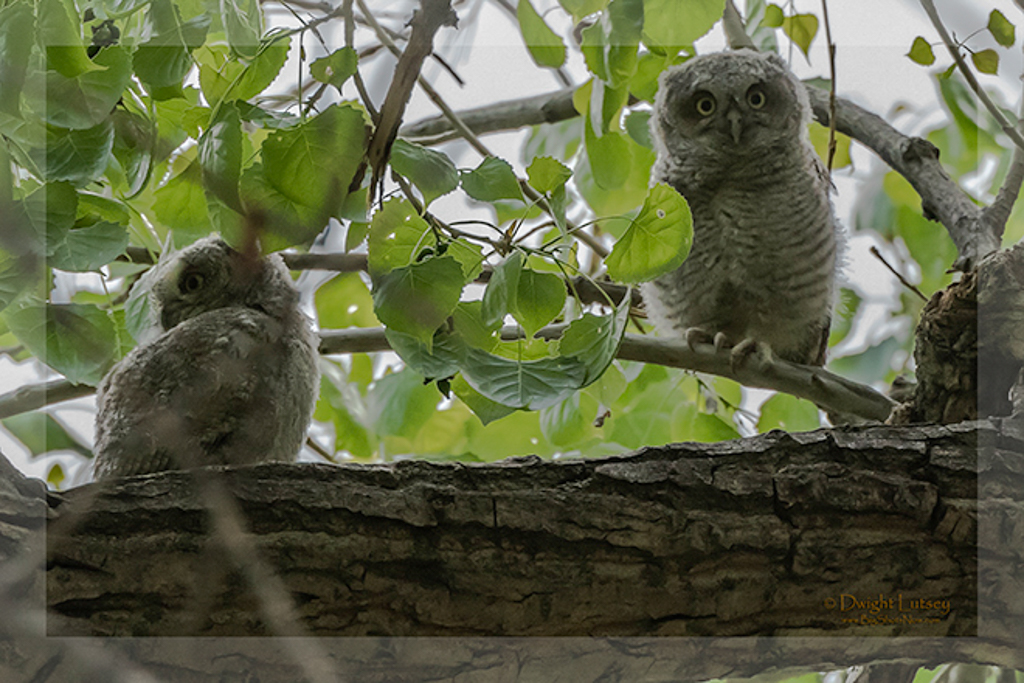
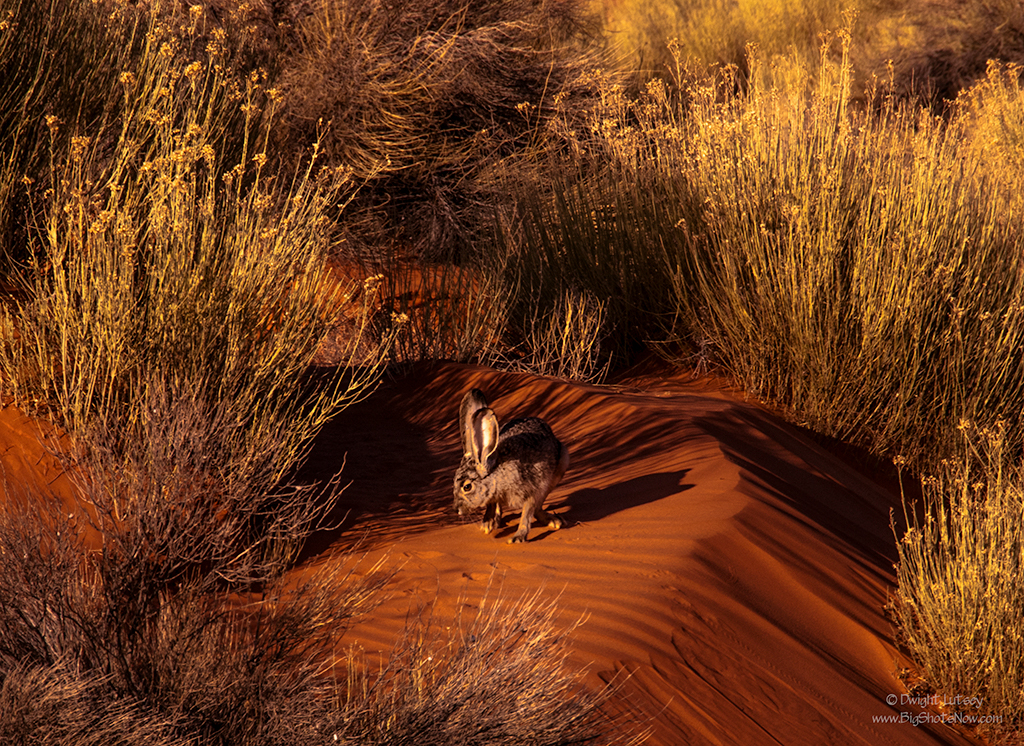
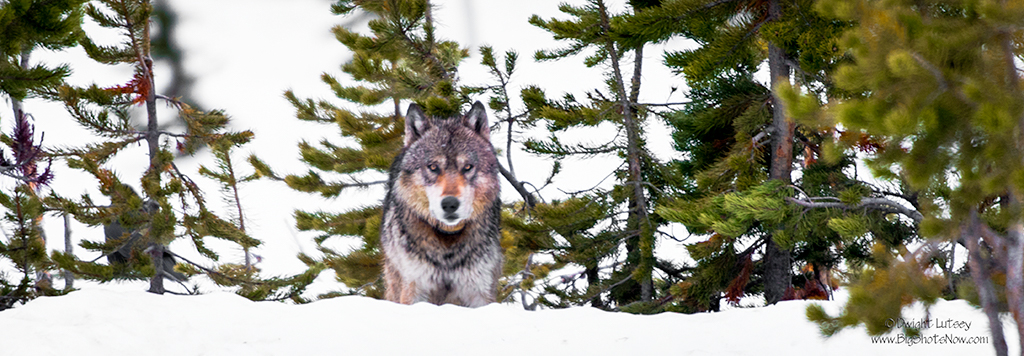
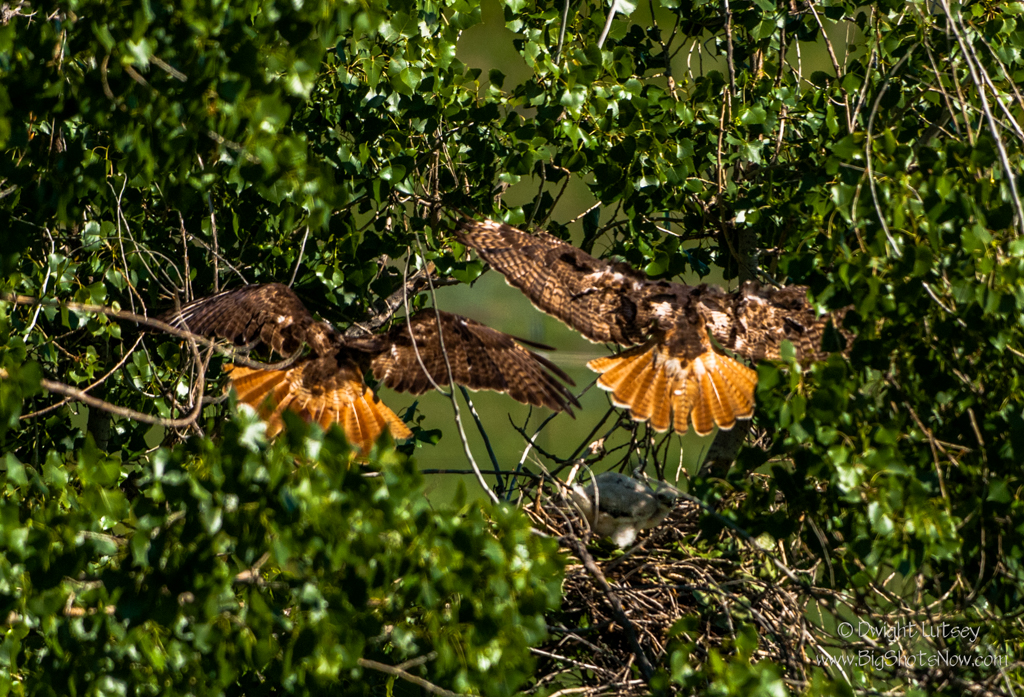
You must be logged in to post a comment.